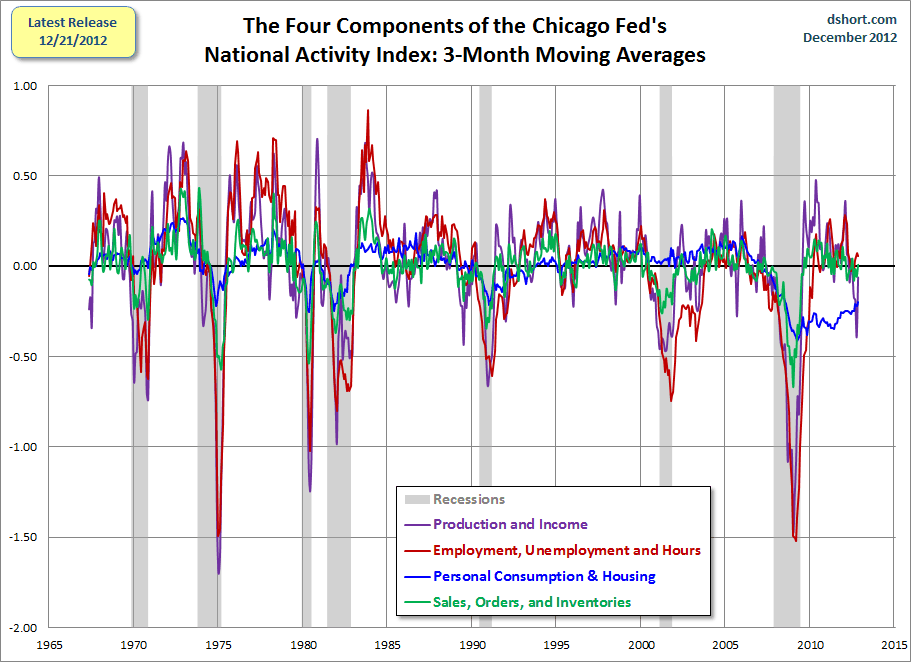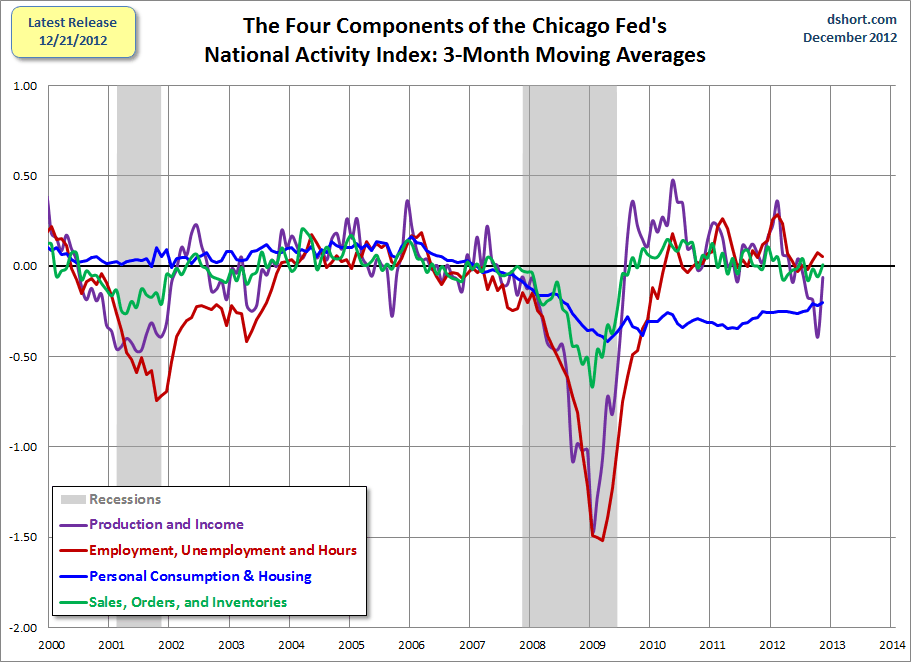Understanding The CFNAI Components
Doug Short | Dec 22, 2012 02:14AM ET
The Chicago Fed's National Activity Index, which I reported on here in PDF format.
A chart overlay of the complete 45-year span of all four categories, even if we use the three-month moving averages, is a bit challenging for visual clarity:

So here is a close-up view since 2000:

But a snapshot of the 21st century contains only two recessions, so it's unclear how the individual components have behaved in during the seven recessions since the 1967 starting point for this data series.
Here is a set of charts showing each of the four components since 1967. Because of the highly volatile nature of the data, the charts are based on three-month moving averages, a smoothing strategy favored by the Chicago Fed economists:
There's a lot to digest in the individual charts. Clearly the first two (production and income and employment and unemployment, and hours) are the more volatile of the quartet. It is also obvious that personal consumption and housing has been the biggest drag since the onset of the Great Recession. In fact, if I use the Excel default vertical axis (optimized for the data) rather than using the same vertical scale for all four components, the sustained lethargy of this CFNAI component is quite dramatic. We can readily see that it's the clear outlier in the quartet. The good news is that the trend is on the mend, ever upward.
I'll close this dissection of the CFNAI components by reassembling them for a closer look at their collective 3-month moving averages since 2007.
A conspicuous feature in the last chart is the obvious fingerprint of Sandy on the Production and Income subgroup in October and the rebound in November.
Trading in financial instruments and/or cryptocurrencies involves high risks including the risk of losing some, or all, of your investment amount, and may not be suitable for all investors. Prices of cryptocurrencies are extremely volatile and may be affected by external factors such as financial, regulatory or political events. Trading on margin increases the financial risks.
Before deciding to trade in financial instrument or cryptocurrencies you should be fully informed of the risks and costs associated with trading the financial markets, carefully consider your investment objectives, level of experience, and risk appetite, and seek professional advice where needed.
Fusion Media would like to remind you that the data contained in this website is not necessarily real-time nor accurate. The data and prices on the website are not necessarily provided by any market or exchange, but may be provided by market makers, and so prices may not be accurate and may differ from the actual price at any given market, meaning prices are indicative and not appropriate for trading purposes. Fusion Media and any provider of the data contained in this website will not accept liability for any loss or damage as a result of your trading, or your reliance on the information contained within this website.
It is prohibited to use, store, reproduce, display, modify, transmit or distribute the data contained in this website without the explicit prior written permission of Fusion Media and/or the data provider. All intellectual property rights are reserved by the providers and/or the exchange providing the data contained in this website.
Fusion Media may be compensated by the advertisers that appear on the website, based on your interaction with the advertisements or advertisers.